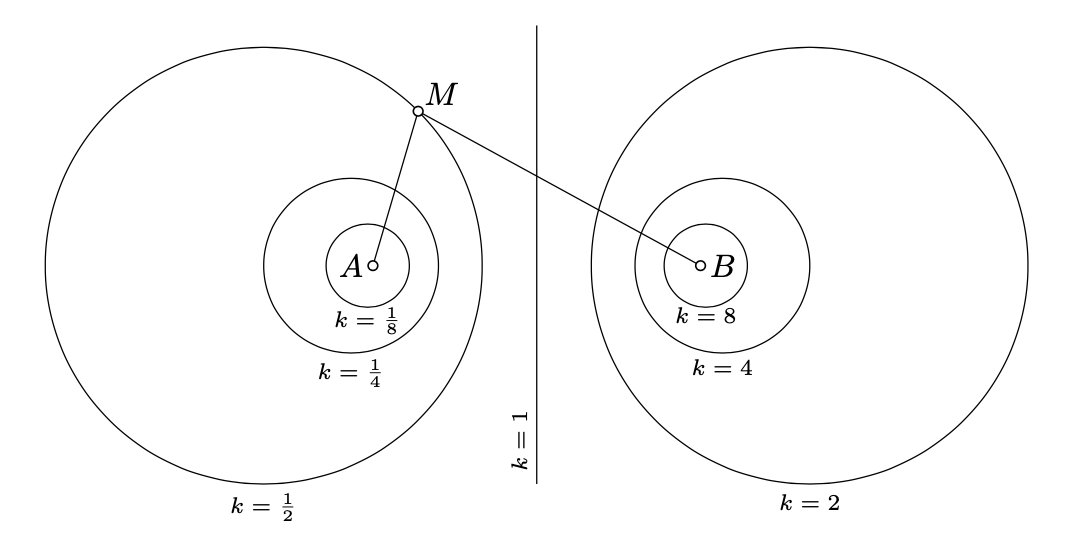7.7: Apollonian Circle
- Page ID
- 57420
The exercises in this section are given as illustrations to the method of coordinates — it will not be used further in the sequel.
Show that for fixed real values \(a\), \(b\), and \(c\) the equation
\(x^2 + y^2 + a \cdot x + b \cdot y + c = 0\)
describes a circle, one-point set or empty set.
Show that if it is a circle then it has center \((- \dfrac{a}{2}, -\dfrac{b}{2})\) and the radius \(r = \dfrac{1}{2} \cdot \sqrt{a^2 + b^2 - 4 \cdot c}\).
- Hint
-
Rewrite it the following way and think
\((x + \dfrac{a}{2})^2 + (y + \dfrac{b}{2})^2 = (\dfrac{a}{2})^2 + (\dfrac{b}{2})^2 - c\).
Use the previous exercise to show that given two distinct point \(A\) and \(B\) and positive real number \(k \ne 1\), the locus of points \(M\) such that \(AM = k \cdot BM\) is a circle.

- Hint
-
We can choose the coordinates so that \(B = (0, 0)\) and \(A = (a, 0)\) for some \(a > 0\). If \(M = (x, y)\), then the equation \(AM = k \cdot BM\) can be written in coordinates as
\(k^2 \cdot (x^2 + y^2) = (x - a)^2 + y^2.\)
It remains to rewrite this equation as in Exercise \(\PageIndex{1}\).
The circle in the exercise above is an example of the so-called Apollonian circle with focuses \(A\) and \(B\). Few of these circles for different values \(k\) are shown on the diagram; for \(k = 1\), it becomes the perpendicular bisector to \([AB]\).
Make a ruler-and-compass construction of an Apollonian circle with given focuses \(A\) and \(B\) thru a given point \(M\).
- Hint
-
Assume \(M \not\in (AB)\). Show and use that the points \(P\) and \(Q\) constructed on the following diagram lie on the the Apollonian circle.



